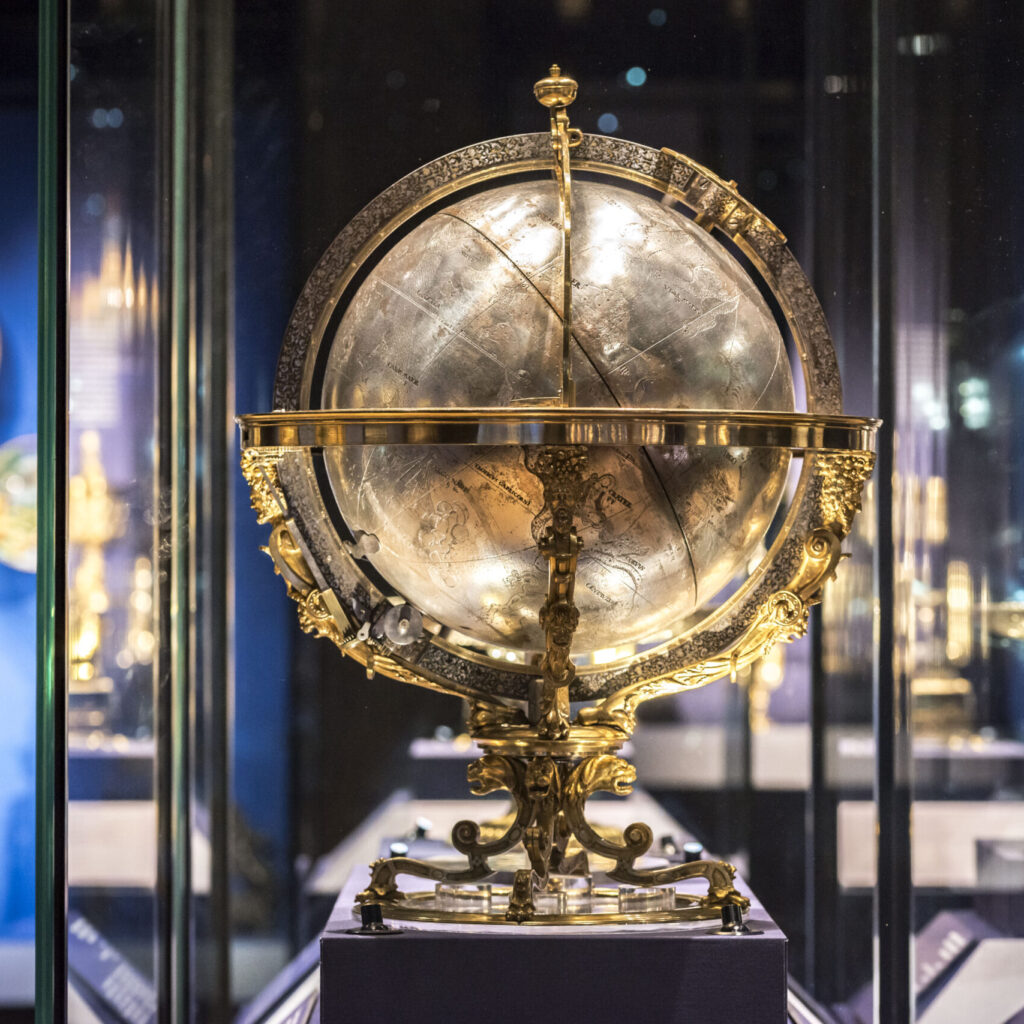We are delighted to announce the opening of a major, £2.5 million development with the opening of the Schroder Gallery, a new gallery
space displaying world-class Renaissance treasures on long-term loan to the museum from the Schroder family collection.
The new space on the lower ground floor of the museum, designed by Eric Parry Architects with Real Studios, takes inspiration from the great treasury displays of the past. It houses one of the finest private collections of silverware in the country, as well as paintings, bronzes, maiolica and gems. The collection of Renaissance objects is displayed in its entirety in public for the first time.
At first-floor level, another new gallery space displays a selection of paintings drawn from a larger collection of 17th-century Dutch art assembled by Baron Bruno Schroder and his wife Emma between 1913 and 1928.
The display of over 100 pieces of silver in the Schroder Gallery includes some of the greatest masterpieces of the silversmith’s art, such as The Schwarzenberg Nef, a rare Mechanical Celestial Globe, and The Aldobrandini Tazza (one of a set of twelve once described as ‘one of the most spectacular groups of 16th century silver’).
The collection also contains masterpieces of 16th century Italian maiolica, a type of vibrantly coloured, glazed pottery. An Urbino deep circular cistern (1549) is highly decorative, painted in blue, green, yellow, orange, brown, and purple. Examples of istoriato dishes, bearing mythical and allegorical themes, include The Mazo Dish painted with the allegory of the civilising power of Eloquence. An Urbino istoriato
circular dish depicts Leda and the Swan, recalling an episode from classical mythology, and possibly the Renaissance inclination to the erotic.
Important paintings from the first half of the 16th century are hung in The Dutch Gallery on the first floor, used most recently as an office and now returning to public use a space designed as a gallery when the former Sydney Hotel was first converted into the Holburne Museum in 1916. The display includes works by artists such as Lucas Cranach the Elder and Hans Holbein the Elder. It features a single non-Dutch work: Pastoral Landscape with Shepherds Playing Music by a River, which was painted around 1637 by the renowned master of the ideal landscape, Claude Gellée—or Claude Lorrain, the grandfather of the pastoral landscape. This year marks a century since this painting was last publicly exhibited—at the Palais des Beaux-Arts in Paris, during the exhibition Landscape from Poussin to Corot (May–June 1925). Other landscapes and portraits on display
are by artists including Aert van der Neer, Jan van Goyen and Willem van de Velde the Younger, amongst others.
All the works are a loan to the Holburne from the Estate of the late British banker Bruno Schroder, by his daughter Leonie and her family. The loan adds an array of world-class works of art to the collection of one of the most respected regional art museums in the country.
Director of the Holburne, Dr Chris Stephens, said: “I am beyond excited to be unveiling two new galleries housing the Schroder Collection at the Holburne, notably a dramatic and sumptuous display of Treasures from the Renaissance. Thanks to the generosity of the Schroder family, we are able to present one of the greatest collections of its kind within what I sincerely believe to be one of the most beautiful galleries in the UK and beyond. It is thrilling for the Holburne and for Bath to house a display of international standing.”
Eric Parry, architect, said: “The Holburne is one of the star attractions within the extraordinary cultural heritage and cityscape of Bath. This new project brings more of both the historic and contemporary buildings into public use, supporting the Museum’s decades-long effort to better serve a growing audience from around the world.
“The original project to refurbish and extend the Holburne was one of the most memorable projects I’ve been involved with and, with the considerable challenge and responsibility of constructing a new building within a UNESCO World Heritage Site, one of the most satisfying to complete and then visit over the years. I’m hugely grateful to the Director and Trustees of the museum for their invitation to complete
this new expansion of the museum’s gallery space.”
Building work on the new gallery began in summer 2024 under the direction of Eric Parry RA, the architect responsible for the Holburne’s renowned modern extension which opened in 2011. The building work involved converting archive and picture stores on the lower ground floor into a new gallery underneath the 2011 extension. As well as creating a new gallery space with full environmental controls, the redevelopment creates a more generous circulation space in the lower ground floor of the museum, with a new display area for additional works from the Holburne Collection.

